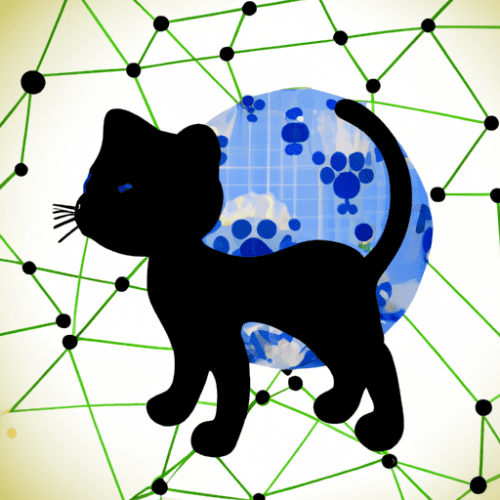
The landscape of machine translation has evolved exponentially in recent years, with AI-driven models reaching new heights in accuracy, context-awareness, and linguistic versatility. In 2025, human translators and localization professionals are deploying AI not as a competitor, but as a powerful collaborator—automating routine tasks, streamlining workflows, and enabling seamless cross-cultural dialogue. This in-depth exploration surveys the leading AI translation models of 2025—ChatGPT-5, DeepSeek, Gemini, and emerging innovations—analyzing their strengths, limitations, and practical applications for experienced language professionals.
The Evolving Landscape of AI Translation in 2025
The need for accurate, nuanced translation has never been greater. As global commerce and communication accelerate, demand for near-instantaneous localization—across marketing, legal, technical, and creative domains—has surged. Traditional neural machine translation (NMT) systems have given way to multi-modal, large language models (LLMs) equipped to handle context, idiomatic expressions, domain specialization, and even tone of voice.
The most advanced tools of 2025 are not merely ‘translation engines’ but adaptive communicators, leveraging billions of parameters, real-time feedback, and vast multilingual datasets. The following sections detail the standout models shaping professional translation and localization this year.
1. ChatGPT-5: Context-Aware Precision and Customization
OpenAI’s ChatGPT-5 sets a new benchmark for general-purpose language modeling and translation. Building on GPT-4’s multilingual prowess, GPT-5 offers:
- Contextual Mastery: ChatGPT-5 exploits expanded context windows (~128,000 tokens), allowing it to accurately translate lengthy, complex documents and maintain consistency in terminology, register, and formatting.
- Customizable Fine-Tuning: Users now train ChatGPT-5 on specific corpora and translation memories. This results in domain-aware outputs, ideal for legal, pharmaceutical, technical, or creative content localization.
- Language Coverage and Fluency: ChatGPT-5 handles 90+ languages, extending robust support to underrepresented dialects and regional variants—crucial for global expansion and inclusive communication.
- Integrity and Bias Management: Enhanced guardrails reduce “hallucinations” and ensure outputs respect target language norms and sensitivities.
For experienced translators, ChatGPT-5 is a valuable assistant in post-editing machine outputs, resolving complex phraseology, or suggesting creative transcreation alternatives. However, human oversight remains essential for high-stakes, culturally sensitive work.
2. DeepSeek: Specialization and Collaborative AI Translation
DeepSeek, known for its open-source orientation and research-friendly licensing, has disrupted the translation market by emphasizing collaborative, domain-specific translation models. Key features include:
- Pluggable Models: DeepSeek allows the integration of specialized translation models (such as medical, financial, or technical LLMs) directly into localization workflows.
- Real-Time Collaboration: Via API-first design and workspace integrations, DeepSeek supports seamless collaboration among translators, editors, and project managers.
- Evaluation Metrics: It introduces advanced quality estimation metrics—informed by in-domain data and human post-edits—enabling translators to quickly assess and prioritize machine-translated content for review.
- Data Privacy and Security: DeepSeek’s local and self-hosting options meet data residency and confidentiality requirements crucial for regulated industries.
DeepSeek is particularly favored by translation agencies managing large, confidential projects, or organizations with stringent terminology and compliance standards. Its open framework encourages community contributions, making it a dynamic platform for continuous improvement.
3. Google Gemini: Multi-Modal Intelligence
Google’s Gemini model (released late 2024, with ongoing refinements in 2025) represents a leap towards unified multi-modal translation. Gemini’s core advances encompass:
- Text, Image, and Audio Translation: Gemini natively translates not only text, but also spoken dialogue and images containing written content—vital for multimedia localization, subtitling, and accessibility.
- Contextual Reasoning: It infers meaning from visual cues and cross-references large-scale world knowledge, improving accuracy for idioms, cultural references, and ambiguous input.
- Real-Time, On-Device Capabilities: Gemini’s lightweight variants enable robust mobile and offline translation, appealing to field professionals and journalists.
- Enterprise Integration: Deep integration with Google Workspace and cloud-based CAT tools streamlines localization for international businesses.
Gemini is especially valuable for marketing and audiovisual localization, supporting workflows where text, visuals, and sound converge. Nevertheless, creative and emerging language pairs may still require human intervention to ensure idiomatic accuracy.
4. Beyond the Big Three: Emerging Contenders and Advancements
While ChatGPT-5, DeepSeek, and Gemini dominate headlines, several emerging models are pushing the boundaries further:
- Meta’s NLLB (No Language Left Behind 2.0): This open-source initiative now supports over 250 languages, including many indigenous and low-resource tongues, promoting inclusivity and cultural preservation.
- Alibaba’s Alice: With a focus on e-commerce and finance, Alice integrates sentiment analysis, ensuring that translated product descriptions and reviews retain persuasive power and intent.
- Local Large Language Models (LLLMs): Startups and academic labs are training LLMs on regional data sets, offering hyper-local lexicon, slang adaptation, and compliance with local privacy laws.
- Hybrid Human-in-the-Loop Systems: New platforms blend AI with expert linguist oversight, automatically escalating ambiguous segments for human review—enhancing both speed and quality assurance.
The trend in 2025 is clear: hybridization. AI models excel at scaling and pattern recognition, while human translators provide essential expertise in cultural nuance, ambiguity resolution, and creative adaptation.
Integrating AI Translation into Professional Workflows
For experienced translators and localization leads, the integration of advanced AI translation models is not merely about automation but about enhancing productivity, creativity, and quality. Key best practices in 2025 include:
- CAT Tool Integration: Most major computer-assisted translation tools now natively plug into LLM-driven engines, supporting translation memory updates, terminology management, and real-time post-editing.
- AI-Driven Quality Assurance: Automated checks for consistency, adherence to style guides, and compliance are now standard, allowing linguists to focus on high-level linguistic and cultural transcreation.
- Continuous Learning Loops: Feedback from professional post-edits is routinely used to fine-tune models within enterprise environments, ensuring evolving accuracy and relevancy.
- Ethics and Data Governance: With increasing regulatory scrutiny, translators must verify that their AI tools meet regional data privacy, security, and copyright requirements.
The most productive workflows blend AI efficiency with supervised linguistic expertise, creating opportunities for both scale and uniquely human value-add.
Conclusion: Navigating the Future of Professional Translation
As we advance into 2025, AI translation models such as ChatGPT-5, DeepSeek, Gemini, and their contemporaries are fundamentally reshaping the translation and localization sector. These technologies offer extraordinary speed, scalability, and wide linguistic coverage, making high-quality translation more accessible than ever before.
However, for professional translators, the role is far from obsolete. The most successful practitioners are those who collaborate with AI—using advanced translation models to automate repetitive tasks, accelerate draft creation, and enhance consistency, while reserving human skills for nuanced judgment, cultural adaptation, and quality assurance. Growing familiarity with model architectures, capabilities, and ethical practices is now essential.
Ultimately, the future of translation is hybrid and human-centric. By embracing the strengths of 2025’s best AI translation models and integrating them thoughtfully into professional practice, language professionals can deliver more value than ever—enabling authentic, effective communication on a truly global scale.








